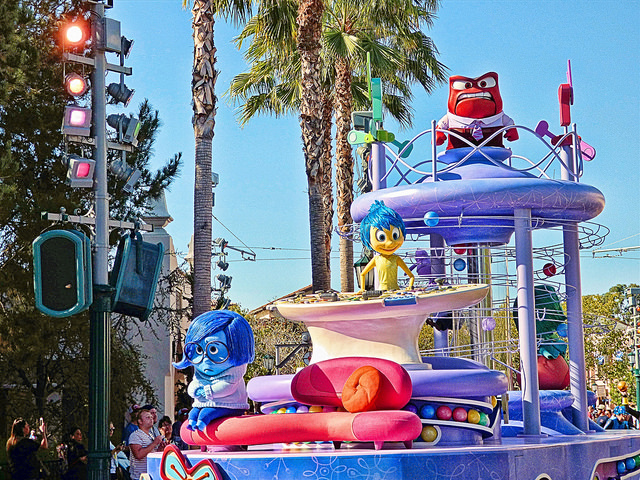Walt Disney’s Pixar Studios has always been known for their heart-warming stories which go outside the box and this summer’s animated blockbuster from the Mouse House was no different in its creativity and poignancy. Inside Out, Pixar’s latest and for some, greatest, may even be the most out of the box that the studio has ever gone, focusing a movie not on humans, animals, monsters or robots but instead using personified and characterized emotions as the main cast of characters.
Joy, Disgust, Anger, Fear and Sadness—five of the major emotions in every human mind—take their spots at “head-quarters” at the beginning of the film, making the decisions and forming the memories for a young athlete named Riley who has just recently moved to a new area and school. Joy, voiced by Amy Poehler, runs a tight operation in Riley’s mind, ensuring that most of her memories are dominated by happiness and glee. But, as Riley becomes situated in her new life, Sadness, voiced by Phyllis Smith of The Office, begins to interfere with Riley’s emotions and memories, unintentionally butting heads with Joy.
It’s a long struggle, using up lots of brain power—literally—before Joy and Sadness begin to understand each other and the writers behind Inside Out leave the audience with the message that all emotions are valuable to an individual, even the ones that many consider to be unfavorable and unpleasant.
With such a hefty and emotionally-weighty take-away, it’s hard to say that Inside Out is the ideal, light-hearted children’s film. Something like DreamWork’s Minions might fit the bill more closely for air-puffed family summer fun.
With that being said, Inside Out is a lovely film overall, which introduces kids to tough neurological concepts like types of memory, abstract thought and the different emotions in ways that they can understand. It’s a good start to understanding human psychology at an early age and I think that kids can really benefit from understanding the importance and validity of all ranges of emotion.
Even though it may seem like a heavy topic to teach young children, the acceptance of different types of emotions has been an important part of children’s development literature and media for a long time. Just think of Fred Rogers instructing children to pound some clay when they feel frustrated or angry on Mr. Roger’s Neighboorhood and any number of other children’s TV shows that teach the acceptance of sadness or anger. The message of Inside Out is similar, but updated with bright colors, vivid animation and celebrity voice actors and due to its feature film length, it can go more in depth into the structures of mind, emotion and personality than a few minutes on a television program can.
In terms of animation, Inside Out was not particularly ground-breaking. It again suffered from “same-face syndrome,” a fault in character design that Disney has been getting called out for, especially in the past few years with characters like Rapunzel, Anna, Elsa and Honey Lemon all featuring similar facial features. Riley, although not identical to other characters in previous Pixar movies, still has that vanilla feeling of the doe-eyed, fair faced and haired heroine that Disney has not worked to diversify.
Though Riley may look boring and generic, one thing cool about her character is that her favorite thing is hockey, an interest that defies gender norms and moves at least a step in the right direction in diversifying Disney.
Although Riley is very average-Disney-girl in looks, the characterization of the emotions themselves was really great and each emotion visually and audibly embodied the feeling they were meant to convey; kudos to the animators and casting directors for getting that important part of the movie correct. Without Joy actually sounding like she was full of joy all the time, the movie would have definitely fallen flat.
Overall, Inside Out was touching and interesting for adult audiences on a level that Disney films rarely reach. It is worth seeing, if not now, then when it comes onto DVD or on Netflix, because I think that the idea that all emotions are valid is something we all need help remembering from time to time.




